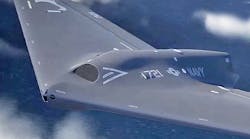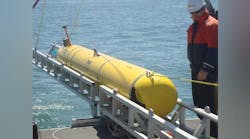By Ram Rajan
Will chassis designers be able to handle the new thermal-management challenges in military and aerospace systems? The “more functionality in less space” market force is not new, yet there are many new factors that affect the way the packaging enclosure company provides solutions. Higher currents, hotter processors, and more switched-fabric technologies are making their way into military and aerospace systems. How will this affect the packaging?
Higher system performance-often coupled with faster and hotter processors, as well as denser packaging-can be two major nemeses for the chassis designer. Dissipating 200 watts per slot like in AdvancedTCA chassis for communications systems is certainly a challenge, but it is not just the watts; the size is a factor, too.
The 8U-by-280-millimeter form factor in ATCA leaves more room for airflow, often with ample space for several fans, yet the 6U-by-160-millimeter ME/cPCI/VXS form factor common in military and aerospace applications can present challenges of dissipating even 100 watts per slot.
Military and aerospace applications can bring added challenges not often found in other industries. Components for handling EMI and shock and vibration can impede airflow. Physical space constraints, the effects of altitude, and limitations of the environment can make the thermal management even more challenging. Dynamic packaging companies, however, are finding ways to provide cooling solutions for each new challenge.
Space constraints are common in many industries. However, in many military and aerospace applications the physical space is a true limitation. Saving space is not just a convenience or a bonus; it is an absolute necessity. The packaging become denser and denser, and cooling the chassis demands innovative design.
First, the chassis had better be modular and flexible. Providing a chassis solution means being able to move all sorts of components and modules in different places. To meet the vast and changing needs of various heights, widths, and depths, the chassis designer needs to have a great deal of experience in military and aerospace systems. Altering fan layouts, EMI filter configurations, power supplies, etc., can completely alter the effect on cooling, shock, vibration, and noise.
Even the most experienced chassis-design teams for military COTS systems need the right tools to provide thermal management solutions in today’s market. One of these tools is thermal simulation and testing.
Thermal simulation and testing
Thermal simulation can be a useful tool in providing an optimal chassis-cooling solution. Programs like Flotherm from Flomerics Inc. in Marlborough, Mass., or Icepak from Fluent Inc. in Austin, Texas, offer advanced simulation capabilities to identify potential hot spots in an enclosure.
The chassis design engineer can then determine the best way to eliminate the hot areas by optimizing the location of fans, baffles, air intake, and exhaust during the design phase. The software provides the ability to perform several “what if “ scenarios to arrive at the ideal design. It allows designers to build conceptual 2-D/3-D models of an enclosure and run preliminary simulations. With animation capabilities, it can illustrate the airflow through an enclosure and scan the heat distribution and airflow on a slot-by-slot basis.
Thermal simulation can also help locate hot spots in a chassis design, where sensors then can make accurate measurements. Then thermal analysis can determine how fans should be grouped together.
Working early with the board vendors can help optimize a solution for the exact configuration of the chassis. The chassis vendor can analyze how to best cool the vendor’s boards within the confines of the particular chassis and components. If the customer’s card is also modeled, the chassis designer can verify the cooling and make sure the hotter components of the card are placed in cooler parts of the chassis (or modify the cooling arrangement of the chassis).
Simulation also can be helpful in balancing airflow and static pressure. Because of static pressure, slower fans can at times provide better airflow and cooling than faster fans in a push-pull setup. Flotherm simulations can help analyze several different fans to determine the best combination.
Conduction, liquid cooling
The application requirements usually dictate the method of cooling the enclosure. For example, in harsh environments (salt fog, fungus, rain, sand, etc.) that require a sealed enclosure, conduction cooling is often the choice. With the enclosure sealed or in high altitudes, there is often not enough airflow for convection cooling. The card cage comprises wedge locks that transfer the heat.
In extreme cases in which the power exceeds 1,000 watts, space is tight, and the enclosure is sealed, then liquid cooling is another option. With heat exchangers, the cool liquid can flow through a milled card cage, dissipating large amounts of heat.
System monitoring is an increasingly important feature of military and aerospace and other systems. Monitoring the chassis health, these devices can be programmable and configurable to the customer’s specific design. A system monitor can also help determine the conditions and optimal sequencing for shutting down cards, which signals to send, and when it is absolutely necessary to shut down the entire system. For example, if there is a problem perhaps only a few cards need to be shut down instead of all them.
Additional features like a “battleshort” feature allows the user to prevent system shutdown in a critical situation. Imagine a fighter pilot in a dogfight who is hit but needs to finish the mission. By activating the battleshort feature, the system won’t shut itself down, allowing the pilot precious time to complete his mission before his system dies.
Ram Rajan is vice president of engineering at Elma Electronic Inc. in Fremont, Calif. Contact Elma by phone at 510-656-3400, or online at www.elma.com.


